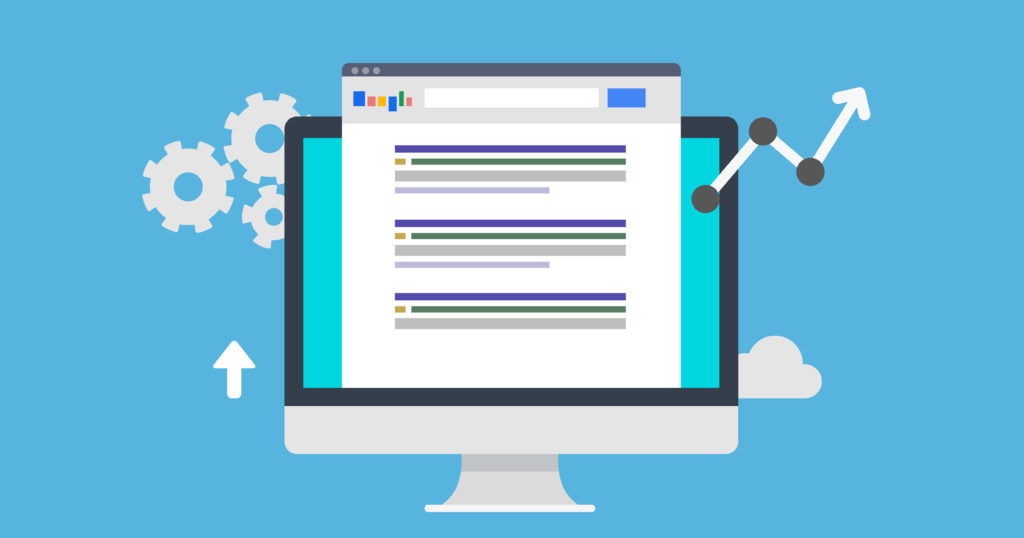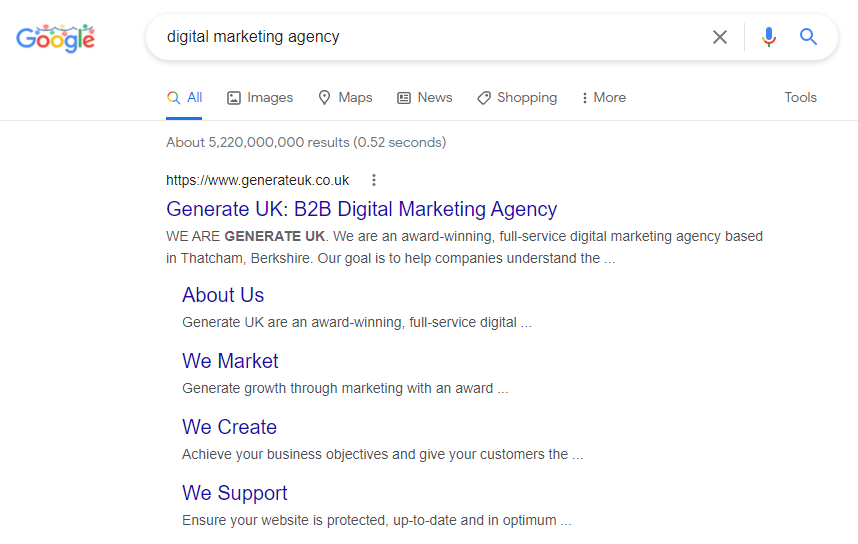Checklist: How to optimise your website content for SEO
Ensure all pages on your website are optimised for search engines with our SEO checklist for website content.

SEO Checklist Summary:
- Keyword Research undertaken?
- H1/2/3 tags implemented?
- Content optimised?
- Enough copy on each page?
- URL structure SEO friendly?
- Are all your internal links correct and working?
- Do all images have alt tags?
- Checked for page duplication/canonicalization?
- Metadata has been optimised?
Have you carried out keyword research?
This is one of the most important points for this section of your SEO checklist Keyword research will help you find relevant terms which you can implement onto your site. This can be done using the Google Ads Keyword Planner tool or any other similar tool.
Consider using long-tail keywords, as well as shorter search terms, as these often have a higher click-through rate.
By carrying out keyword research before you implement any SEO, you will be assured that you are using the most suitable keywords for your sector, as well as the best ones you have a chance to rank for. This will also make the optimisation of your copy much easier (and quicker!)
Avoid the highly sought-after, competitive, keywords, as these will be very difficult to rank for (unless you are a large corporation, with a larger SEO budget) and are likely to cost you a lot of money.
Instead, look at the keywords with lower competition and a smaller search volume. This way you can spend the same amount of money but rank for several good keywords instead of potentially only one.

Are your H1/H2/H3s tags relevant?
There are many elements that search bots look at on a site and one of these are tags. If you have headlines and subheadings make sure these are tagged with the relevant H tag.
This is likely to help you improve rankings as bots will pick up on these. These also make it easier to break up large blocks of copy to give your users a better experience.
H1 tag – This tag is used for main headings, usually the headline of the page. Use it to draw out your main keywords and subject matter. The headline within this tag should state what the overall post/page is about.
H2 tag – These tags are used when you want to break up content into sections, make sure your keywords are also included within these tags for optimal SEO.
H3 tag – If you want to further break down your content, this is when the H3 tag comes in. Breaking down your content this far can make your copy easier to scan and read.
Does your page contain enough optimised content?
You may think that a sparse page with next to no writing on can be attractive, clutter-free and make it easy for the user to scan.
However, search bots look at each page and it is likely to affect your ranking if there is not enough copy on each one. As part of your SEO checklist, check each page and decide whether you have enough copy and whether this has been optimised with your chosen keywords and terms.
Having an extra paragraph or two of copy can also help to boost your SEO strategy to rank for more keywords. However, make sure the content is relevant to the page and don’t ramble.
High-quality content and link building are two of Google’s most important signals used to rank your site. So, make sure your copy is relevant, enticing and most importantly original and not copied from another source unless you are quoting someone else.

Is your URL structure SEO friendly?
There are several important aspects of a URL you need to consider making it SEO friendly. These are:
To render correctly on all browsers, URLs must be shorter than 2,083 characters
To help your rankings make sure the URL is clear and not full of numbers and random letters. The optimal format is:
https://www.yourwebsitename.com/category-keyword/subcategory-keyword/primary-keyword.html
Creating your URL in this format, not only will help make it SEO friendly, therefore a big tick on your SEO checklist, but it will also help your rankings.
For example, if you were launching a clothes shop and you wanted to apply this URL logic for your women’s stilettos, the URL could look like this:
https://www.yourclothesshopname.com/products/shoes/womens-shoes/stilletos.html
In this instance, the category keyword is Shoes. The subcategory keyword is the next search field down, which in this case is shoes and then the primary keyword is the main focus on the page.
Are all your internal links working and linking to the correct page?
There is nothing worse than browsing a website and clicking a link only to come up with an error. This can also have a significant effect on your rankings, so make sure all your internal links are correct and working.
This may take time, but it is an important task on your SEO checklist not to overlook. This will help ensure you provide your users with the best online experience you can.
Do all your images have alt tags?
Image alt tags are there to tell the user what the image depicts, should the image not load up on their device.
However, it is also an important aspect of a website for users with limited or no sight, as this tag will be used to describe what they can’t see. Therefore, make sure you have alt tags on every image.
This will also help with your SEO as it is another aspect checked by search bots, so it could affect rankings if you are missing these.
Check for page and domain canonicalisation to avoid duplication issues
Duplicate pages are a common occurrence in non-www., multi-languages sites and eCommerce websites. Make sure you eliminate duplicate pages by checking your pages are canonicalised.
For example, if you have two different websites, one in the US and one in the UK with the same domain name, make sure the UK is canonicalized as:
https://www.yourwebsitename.com/en-uk
Rather than your US site which would end in /en-us. By fixing these duplicate issues you will not only be able to put a big tick on your SEO checklist, but it will have a positive impact on your rankings for your sites.
Ensure all your metadata is optimised

Metadata including title and description is the text which will appear in SERPs and is scanned by search bots.
Make sure your metadata is completed for each page. Without this information filled in you are likely to see a negative impact on your rankings.
Meta Title – This needs to be catchy and attention-grabbing. It is often the first thing a user will see on the SERPs so make sure it is amazing. This is a great place to include your keywords. The maximum length for this is 60 characters.
Meta Description – The maximum limit for this is approx. 160 characters, however, the optimal length is between 50-160. Make sure you include your keywords within this and describe what the page will contain as well as a strong CTA such as discover, learn more, read more etc.
About Generate UK
We are an award-winning, full-service digital marketing agency based in Thatcham, Berkshire.
Our goal is to help companies understand the true value in digital marketing and set out to help those organisations develop and implement new technology and processes to deliver a growth marketing strategy in line with their goals.
Partnership is key to our digital marketing approach. We work closely with you to identify what will drive the most value for your business, and provide a range of digital marketing services to achieve it.
We remain the only UK marketing agency to be awarded the Customer Service Excellence+ Accreditation, demonstrating our commitment to our clients.